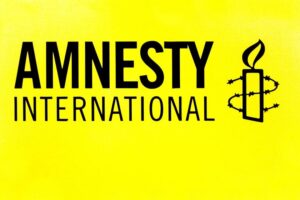
Enforced disappearance is a crime under international law and an insidious practice that not only persists as a relic of past conflicts but also still looms large as a contemporary instrument of oppression used by the states across the world as a tool to silence dissent and instill fear.
“I keep all of Masood’s clothes, I can smell him in the clothes. For years after his disappearance, every Eid, I used to buy him new clothes. I don’t lock doors since he was forcibly taken from us. If he comes back even in the middle of the night, he doesn’t have to wait outside” – Amina Masood Janjua, wife of Pakistani businessman Masood Janjua who was forcibly disappeared on 30 July 2005.
A person is forcibly disappeared when they have been apprehended by the authorities or their agents, or people acting with their authorization or acquiescence, but the authorities refuse to acknowledge this or conceal the person’s fate or whereabouts, placing them outside the protection of the law (art 2, International Convention for the Protection of All Persons from Enforced Disappearance, ICPPED) hence at risk of torture or extrajudicial execution. Sometimes, disappearance may also be committed by armed non-state actors, like armed opposition groups (art 3, ICPPED).
South Asia has a long history of enforced disappearances. Sometimes states have kept people in arbitrary detention 24 or 48 hours, in some cases, for a month, or a year – without revealing their whereabouts or release them, but in thousands of cases people have been missing for decades. Despite various commissions set up in most of the countries to investigate these crimes, they have hardly been successful in ensuring justice, and holding perpetrators accountable, thereby leaving families of the victims in a constant state of anguish.
To demonstrate the extent of the problem, Amnesty International partnered with more than 20 human rights organisations campaigning to end this culture of enforced disappearance in the region, and created this digital space—a place where the stories of the disappeared are memorialized. Together, we highlight some stories that are representative of broader patterns of enforced disappearances and provide the families of the disappeared an opportunity to unite in their demands for justice and accountability.
Sri Lanka’s dark legacy of enforced disappearances underscores the blatant disregard for human rights that characterized the civil war and youth uprisings, ranking the country as the second highest worldwide for the practice, with 60,000-100,000 reported cases. For decades, Sri Lankan authorities have weaponized disappearances as a tool of state terror, ostensibly to combat ‘terrorism’ and maintain national security.
The practice of enforced disappearances traces back to the 1970s and 1980s, during the Janatha Vimukthi Peramuna (JVP) led insurrections (1971 and 1988-89), and intensified throughout the internal armed conflict, with Tamil youths disproportionately abducted by state forces and government-aligned militants. The cessation of the armed conflict in 2009 did little to halt enforced disappearances. state-backed groups in white vans created a new series of post war enforced disappearances, a wave of “white van abductions”, targeting journalists, activists and minorities communities. There is a trail of devastation, unanswered questions and deep-rooted grief among the families of the missing. Their tiring, yet tireless quest for truth, justice and reparation has been marred by state evasion, silence and even harassment.
Sri Lanka ratified the Convention for the Protection of All Persons from Enforced Disappearance (CPED) in May 2016 but it did not recognize the competence of the Committee on Enforced Disappearances to receive and consider communications from or on behalf of victims. Sri Lanka initially introduced a mechanism for the families to apply for death certificate for their missing family members, one year after the disappearance and introduced Certificate of Absence for the missing persons in 2016. However, Sri Lanka passed a domestic law criminalising enforced disappearances in 2018. Human rights organisations have repeatedly stated that the transitional justice process of Sri Lanka falls far short of meeting serving justice to the families.
The response of the Sri Lankan government to demands for justice have been tepid and largely performative. Despite establishing bodies like the Office of Missing Persons and the Office of Reparations in 2017 and 2018 respectively, efforts have fallen short of meaningful accountability. These initiatives are marked by a lack of trust and tangible progress due to political interferences have failed to assuage the victims’ families or to address the core issue at hand.
Human rights organizations and the United Nations, has repeatedly called on Sri Lanka authorities to investigate and, if there is sufficient admissible evidence, prosecute those suspected of criminal responsibility for these heinous acts, to provide the victims and their families with truth, justice, and reparations. Yet, the persistence of enforced disappearances as an issue underscores the urgent need for Sri Lanka to confront its past, ensure accountability, and safeguard against the recurrence of such crime.
source : amnesty.org
